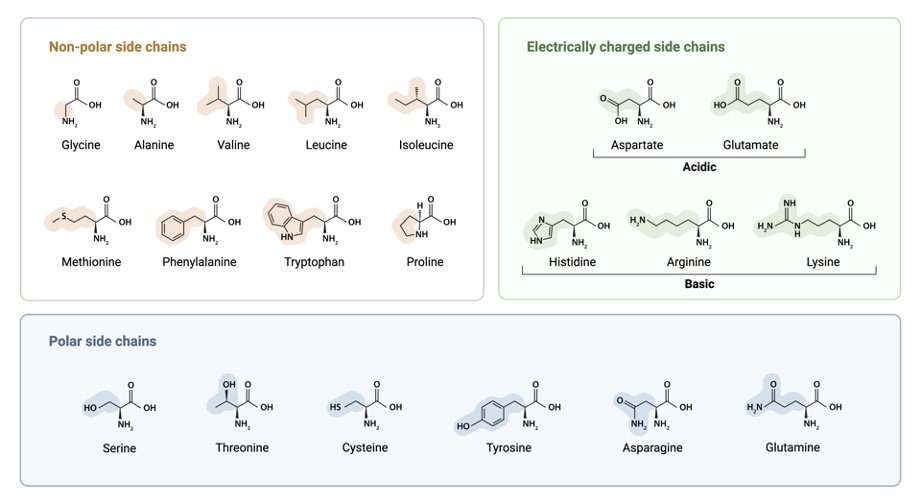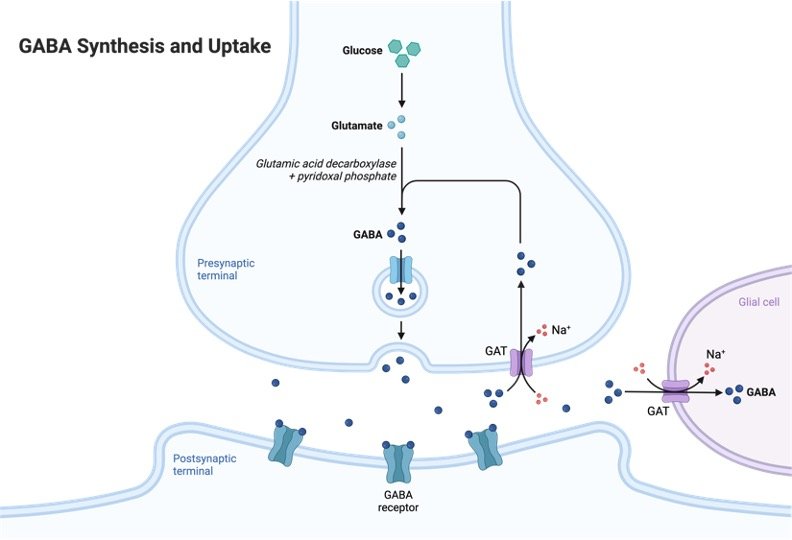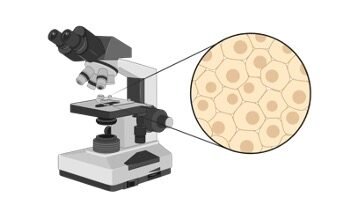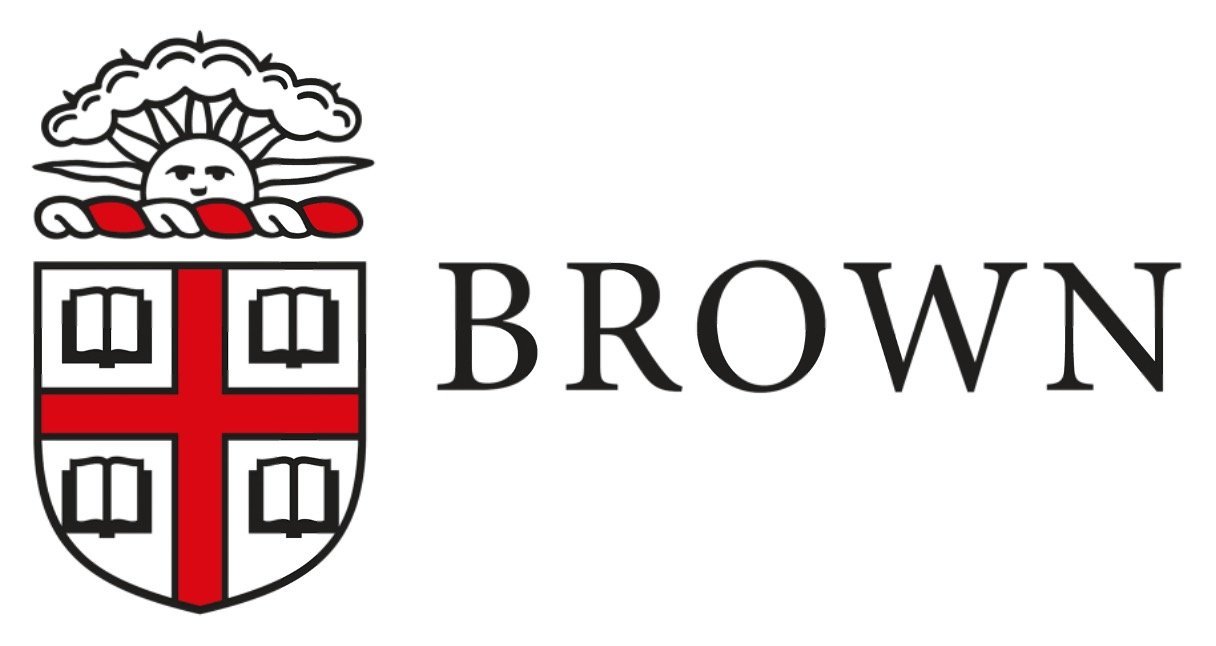Table of Contents
Glutamic Acid Definition
This non-essential amino acid has a molecular formula C5H9NO4. When the carboxyl group of this amino acid loses a proton under physiological conditions it gets a negative charge and now it forms glutamate amino acid.
Glutamate is found abundantly in the brain and it also acts as a neurotransmitter. Glutamic acid comprises the building block of many proteins.
What is Glutamic Acid?
Glutamic acid is represented by symbols Glu or E. Like with all amino acids it also has an amino-terminal end, side-chain, and carboxyl-terminal end. The side chain in the case of this amino acid has a carboxylic acid group. The GAA and GAG codons code for the polypeptide chain.

Glutamic acid like other amino acids except glycine has both L and D-form stereoisomers. L-form is normally seen in the case of the living organism. The D-stereoisomer form of glutamic acid in cells of the liver and in the cell wall of bacteria.
The blood-brain barrier cannot be crossed by glutamate amino acid as a result it needs to be synthesized in the brain itself from α-ketoglutarate or glutamine and it cannot be obtained by the diet.
Glutamic Acid vs Glutamate
Glutamate can be formed from glutamic acid when it loses a proton. Glutamic acid has the formula CH2CH2COOH, while glutamate has the formula CH2CH2COOH. Glutamate is basically the anion of glutamic acid.
This aliphatic amino acid has a pKa value of 4.1so in an environment of pH more than 4.1, it will exist in the polar negatively charged form. Hence, glutamic acid is mostly observed as glutamate in physiological conditions in the human body.
Glutamic Acid vs Glutamine
Both these amino acids are often confused as they have similar names. Glutamic acid has an amine group instead of a carboxy group as in Glutamine that is represented as Gln or Q.
Food that is high in glutamic acid like yeast, shellfish, and soy sauce give an umami flavoring that has a pleasant savory taste. Glutamate is often employed as a flavor enhancer in form of MSG.
Glutamic Acid Function
Glutamic acid comprises various proteins and it or specifically glutamate also functions as a primary excitatory neurotransmitter in the CNS. As a result, it is highly abundant in nervous tissue and in the brain.

Neurotransmitters are signaling molecules or chemicals in the nervous tissue. Acetylcholine, dopamine, and adrenaline are all examples of neurotransmitters. Glutamate receptors are located on the plasma membrane of astrocytes and neurons.
These include kainite, AMPA, metabotropic receptors, and NMDA. Glutamate bind to the receptors to excite them as it is an excitatory neurotransmitter that will increase the likelihood of an action potential or nerve impulses that function in signaling.
Glutamate like other neurotransmitters is stored as vesicles at chemical synapses. Glutamate is released via exocytosis when a nerve impulse travels to the synapse. This released neurotransmitter will bind glutamate receptors in the adjacent cell.
Out of the 4 glutamate receptors AMPA, kainite, and NMDA are ionotropic that on activation lead to the opening of ion channels. In the case of metabotropic receptors, a second messenger is involved that functions in signaling.
Glutamate as a neurotransmitter is involved in synaptic plasticity that is important for the memory and learning process.
This enzyme aids in the conversion of glutamate to gamma-aminobutyric acid (GABA). GABA is an inhibitory neurotransmitter that forms from glutamate and binds to GABA receptors.
This binding is inhibitory and decreases the likelihood of the formation of the action potential. This binding can have a sedative effect, for instance, alcohol and drugs like benzodiazepines activate GABA receptors.
Clinical Relevance of Glutamic Acid
Impaired glutamate signaling can result in dysfunctions and resulting disorders in the brain.
Neurodegenerative Disease: Several neurodegenerative disorders can be traced to the chronic excitation by glutamate in neurons. For example, Alzheimer’s and Huntington’s disease, and other motor neuron disorders. The mechanism behind this is glutamate excitotoxicity that can impair nerve cells and even kill them.
Psychiatric Disorders: In the case of psychiatric disorders like bipolar disorder and schizophrenia excessive glutamate activity has been observed. Pharmacological drugs like ketamine that specifically target the glutamate system are being considered for treatment in these cases.
Substance Abuse: It also takes part in reward pathways and is thus involved in addiction development and maintenance. Cognitive processes like sensitization, habit learning, reinforcement, craving and conditioning, relapse, and craving.
Glutamic Acid Citations
- Gamma-fluorinated analogues of glutamic acid and glutamine. Amino Acids . 2003 Apr;24(3):245-61.
- Glutamic acid, twenty years later. J Nutr . 2000 Apr;130(4S Suppl):901S-9S.
- Microbial production of poly-γ-glutamic acid. World J Microbiol Biotechnol . 2017 Sep 5;33(9):173.
- Images are created with BioRender.com
Share












